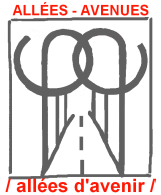News
Allée, Allee, allé, aleja, alej, аллея
Thursday, 03 May 2018
Allee, allé, aleja, alej, аллея: all these words are the equivalent of the French word "allée" (i.e. avenue) in German (Allee), in Swedish, Norwegian or Danish (allé), in Polish, Slovenian, Latvian or Slovakian (aleja), in Czech (alej) and in Russian (аллея).
These terms are all used to designate a street, a road, a path or a canal lined with trees.
Have a look, for example, at the most beautiful "Alleen" of Switzerland: https://www.baumpflege-dietrich.ch/bern-thun-interlaken/images/pdf/medien/fachberichte/die_schoensten_alleen_der_schweiz.pdf
Or jump over to Sweden: you can choose to become a sponsor to the "trädallé" (tree avenue) of the Göta Kanal, a 190 km long canal built in the beginning of the 19th century: https://www.gotakanal.se/sv/tradfadder/
In neighbouring Norway, the Norwegian road authority awarded Borgestad avenue (Borgestadallé) the title of the "most beautiful road of the year" in 2012 : http://www.side3.no/dette-er-norges-vakreste-vei/3346855.html
Avenues and trees, symbols of peace
Friday, 27 April 2018
BUND Mecklenburg-Vorpommern and Drogi dla Natury launched a programme called "Make avenues, not borders". In 2014, the first German-Polish avenue was planted, as a symbol of European cohesion and peace.
Trees are powerful symbols. The two Korean leaders who are planting a tree on the boarder these days, as a "symbol of peace and prosperity", did understand this.
In 1922, French Marshall Joffre tourned the world to promote peace. In the United States, he planted one of the 1000 elms of the Des Moines Memorial Drive.



